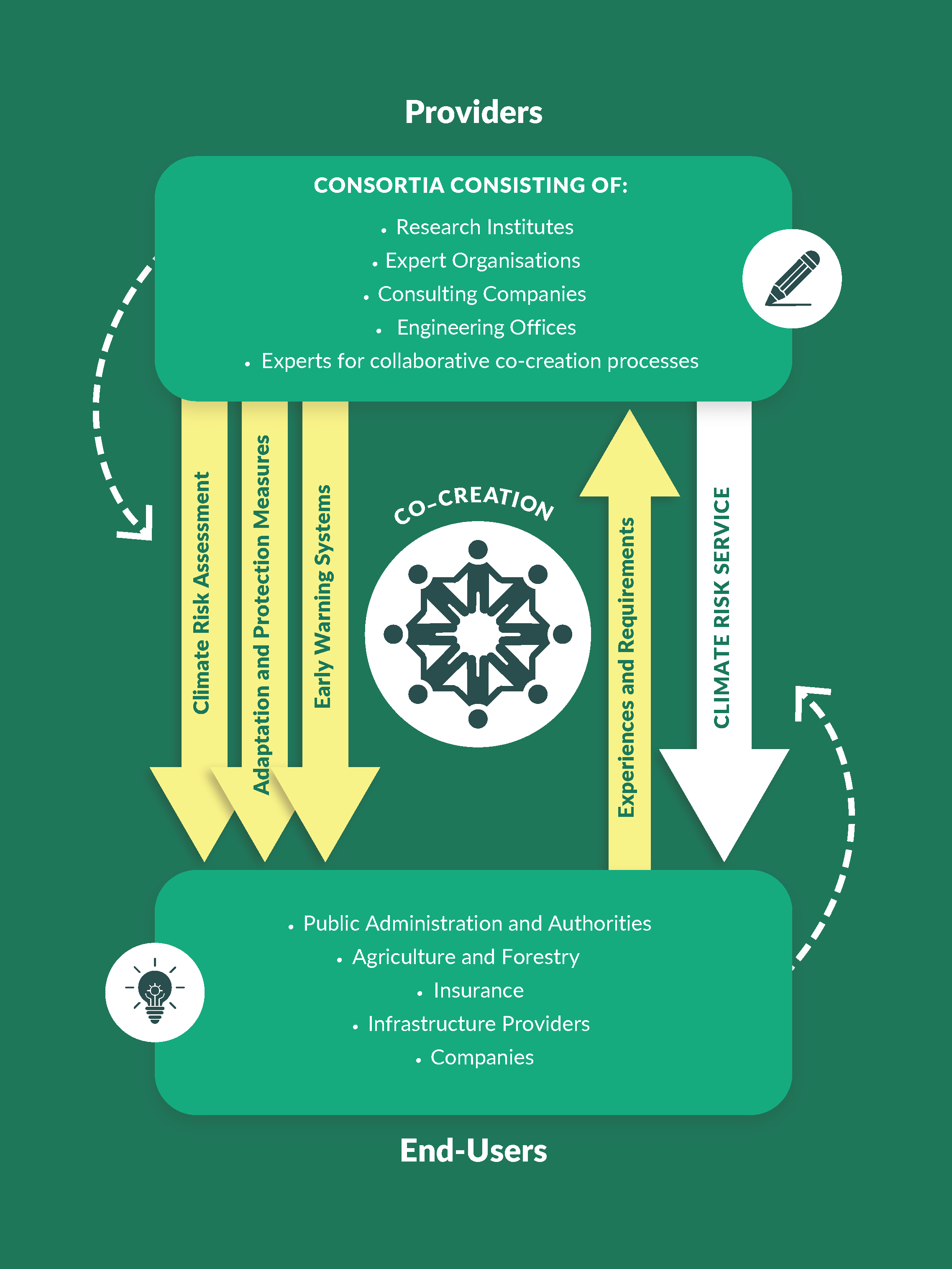Results
As core results, a demonstrator and the manual for the co-creation of a climate risk service in Austria were developed in CRiSDA.
A risk assessment for agricultural drought was carried out for Austria as a demonstration of a climate risk service. The aim was to consider different time scales and enable services for monitoring and planning. The risk model uses expert weighting of the identified risk factors for application at the level of Austrian municipalities. The demonstrator provides a set of services for decision makers to 1) monitor drought risk, 2) analyse future changes in drought risk due to climate change and 3) better understand the spatially variable factors of drought risk in Austria. This is not an implemented (active) service, but an example of what a climate risk service could look like.
What is a climate risk service:
In order to mitigate the negative social and economic consequences of climate change and to identify and monitor context- and location-specific adaptation measures, a climate risk analysis is required. With the help of a climate risk service, the necessary steps and data streams are to be brought together and operationalized.
In summary - a climate risk service is defined as follows:
- Objective: A climate risk service is designed to identify, assess and communicate socially relevant climate-related risks and their components (hazard, exposure, vulnerability) in connection with natural variability, man-made climate change and socio-economic development.
- Purpose: It is process-oriented and offers decision-makers data- and/or expert-based insights, tools and recommendations to help them understand, prepare for and respond to the possible future developments and impacts of climate-related risks on specific regions or sectors.
- Climate risk management: This service also forms the basis for the planning and monitoring of climate risk management measures and the associated ongoing monitoring of risks and their components.
- We understand climate risk management as a synergistic approach in the interaction of natural hazard management and climate change adaptation.
- Time scales: Depending on the context, this includes different time scales from short-term to long-term.
- Target groups are usually multifaceted and sector/region dependent and may include both formal and informal actors, such as individuals, businesses, public authorities and governments and organisations.

Webinar
On February 28, 2025, the core results of CRiSDA were presented in a webinar. Over 100 participants discussed what a climate risk service is, what requirements there are, and what potential climate risk services have to support climate change adaptation.
The agenda as well as the presentations can be found here:
- Agenda
- Miro Board documentation
- Why are climate risk services relevant for Austria? - Stefan Kienberger
- Relevance of climate risk services for climate change adaptation - Marc Zebisch
- CRiSDA climate risk service demonstrator using the example of drought in agriculture - Raphael Spiekermann
- Launch of the climate risk service stakeholder co-creation manual - Xiran Dong